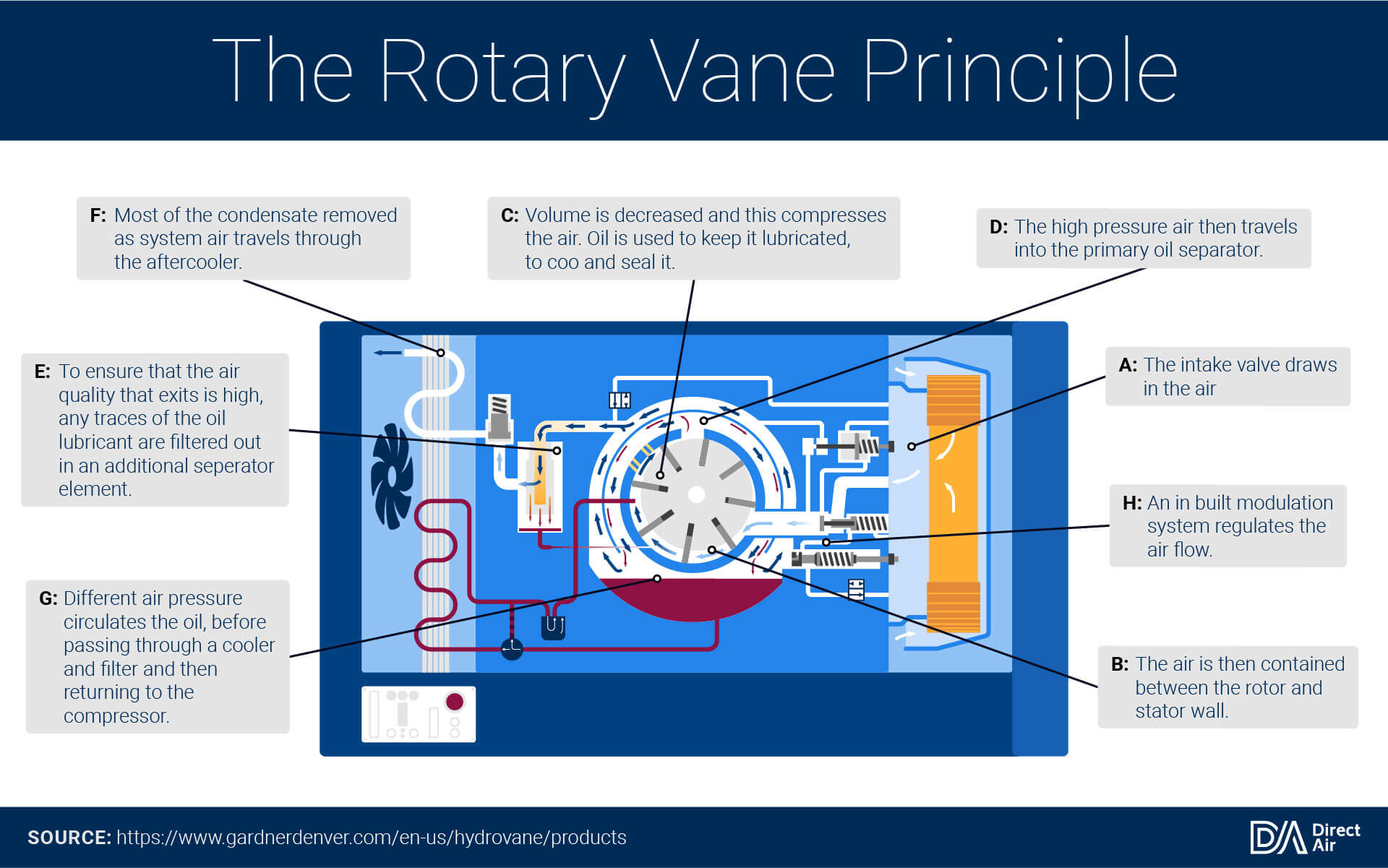Air compressors are valuable tools within industrial and home use. By replacing your power source with one of these machines, you can save a considerable amount of energy.
Not only does this help to reduce your carbon footprint but can also decrease your energy bill.
Air is often considered as another power source, after gas, electricity, and petrol. Of course, air compressors require electricity or gas to function. But, from this small input, a phenomenal amount of energy can be produced with an air compressor.
Air compressors have a variety of uses, common applications include pneumatic tools, spray painters for auto body shops and even generating snow machines for indoor ski slopes.
They are not restricted to construction, medical, dental and even food industries use air compressors.
These nifty machines are also suited for DIY, sanding, painting and revamping old furniture can be completed in record time compared to using traditional methods and can give a professional result without the price tag.
Air compressors can even be used for cleaning workspace, blowing air to rid your workshop of debris is quick and simple.
But with so many models on the market nowadays, how can you be sure you are purchasing the right air compressor for you?
Below is a guide to the variations in machines and what application they are suited to, so you can make an informed decision for your new investment.
Low Noise Air Compressors
The most important factor to consider when purchasing any equipment is your own safety. Air compressors can create an immense amount of noise.
It is imperative that you consider your hearing, in both the long and short-term. Low noise air compressors can reduce levels to around 40 dB, to put this in perspective, 60 dB is considered safe and anything above 85 dB can cause long-term damage.
These low noise machines achieve their lower sound level with the addition of an acoustic chamber for containing the noise.
When working with any loud machine, it is important to remember that ear defenders but it is especially crucial to invest in a quieter machine if you anticipate frequent exposure.
Lubrication
All air compressors require lubrication to safely and efficiently draw air into the central chamber. Your machine can achieve this in two ways.
Oil-based air compressors use oil within their process. Due to extra elements, these machines are often larger, heavier and higher in the initial cost. They do require regular checks to ensure oil is at a sufficient level.
These air compressors are typically found within industrial settings as they are more robust.
Oil-free air compressors gain their lubrication through a non-stick coating, typically Teflon. Not only are these machines cheaper to run, but they are also smaller and lighter. Ideal for home workshops and DIY. These eliminate the use of using more fossil fuels.
Medical and food industries use these air compressors at it eliminates the risk of contamination with oil.
Be aware, this non-stick coating does eventually wear away, so if you are tempted by an oil-free compressor, be prepared to replace elements or the whole machine in roughly ten years.
Fix Speed and VSD Air Compressors
This is where you have the biggest opportunity to save energy and reduce your impact on the environment.
A fixed speed air compressor sends a consistent stream of power to the motor, this does give reliable frequency but are less energy-efficient than their counterparts. They are ideal for industries that require a continuous power demand.
A variable-speed compressor, also known as a VSD or VFD, adjusts its power in relation to the demand for air. This is done with the use of diodes, converting energy into AC and then to DC which then acts as a switch.
This means the power can be closely controlled and energy is not wasted, although these machines are higher in cost initially, they can save on energy bills and can be more cost-efficient.
Piston Compressors, Scroll Compressors & Rotary Screw Compressors
All machines previously mentioned have been operated with pistons, which is how scroll compressors are operated.
Scroll compressors use a piston travelling downwards to decrease pressure to form the cylinder door open. This draws in air, the piston travels upwards and the sudden increase in pressure forces air out at a higher rate. This is then repeated is a reciprocating ‘scroll’ pattern.
These air compressors can cool down quickly and have the highest energy efficiency but do come at a higher initial cost.
Rotary screw compressors work in a similar fashion but have rollers as a replacement for the piston. These rollers are places just off the middle of the central shaft, with one side in constant contact.
The rollers rotate at extreme speed to cause pressure change. They have excellent power capacity, are easier to maintain and are lower in cost, making them excellent for home use.


